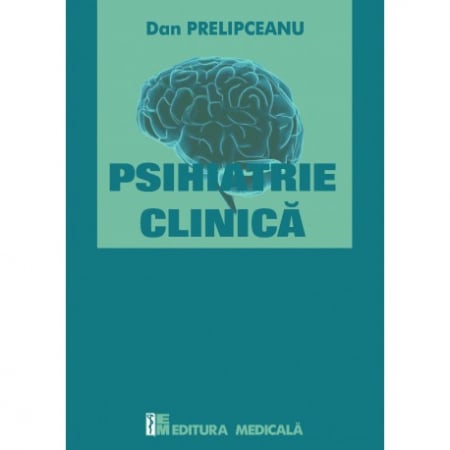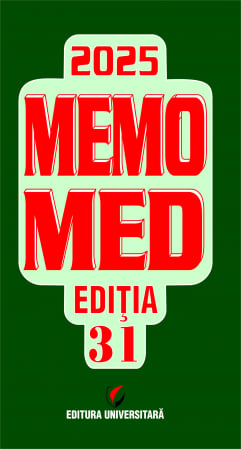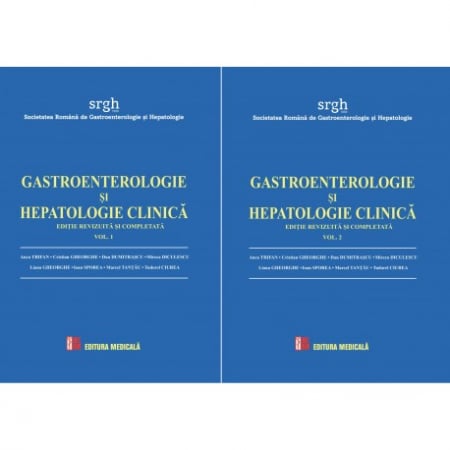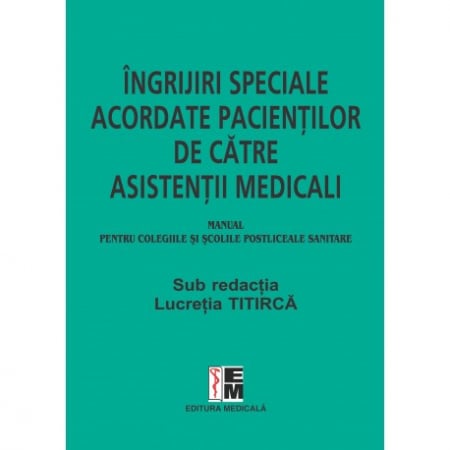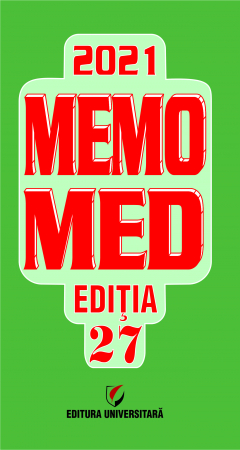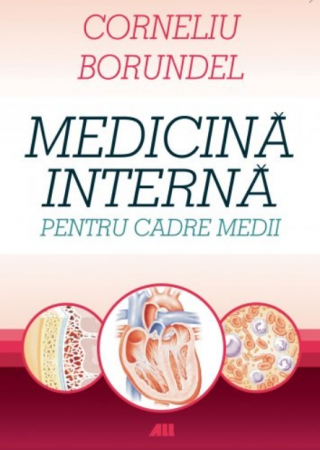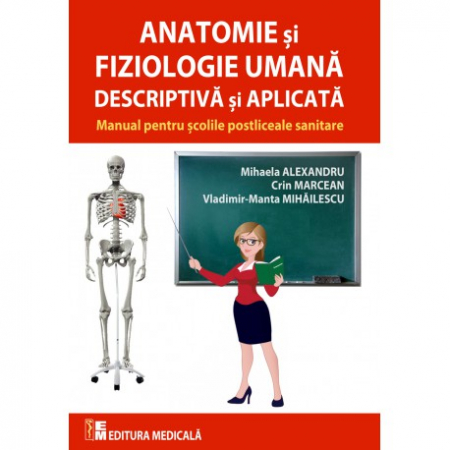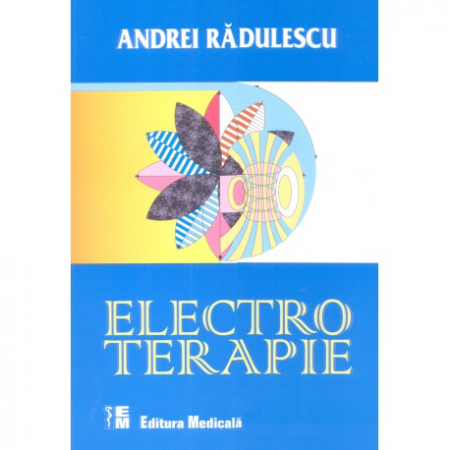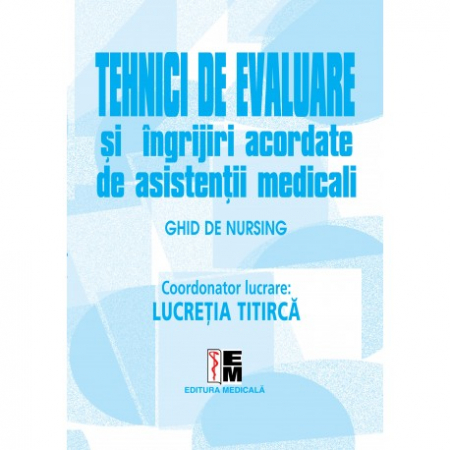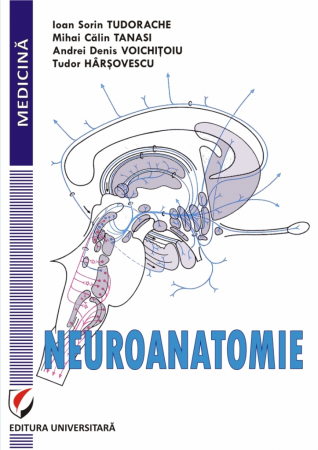Publisher: Editura Universitară
Author: Laura Aelenei
ISBN: 9786062812393
DOI: https://doi.org/10.5682/9786062812393
Publisher year: 2021
Edition: I
Pages: 246
- Description
- Download (1)
- Authors
- Content
- More details
- Reviews (0)
This paper refers to attention deficit / hyperactivity disorder in adults (ADHD) addressing the relationship between it and personality disorders. ADHD, considered until recent years a childhood disorder, after the new classification of mental illness -DSM-5, is more common in adults.
The issue discussed is extensively researched in the literature recently, being a topic of interest, taking into account the fact that if in many diagnostic groups DSM-5 kept the previous vision, the ADHD disorder changes led to some notable differences. It is now clear that the symptoms of ADHD are seen as a relatively constant component throughout the life of the individual, with possible attenuations with age, but with the persistence of a proportion of manifestations in adults, which could be unnoticed until now. This vision is very close to the classic descriptions of personality, hence the possibility of a comparison between the two pathologies. The new perspective in ICD 11 also follows the DSM-5 trend in adult ADHD. Thus, it is much clearer the possibility of diagnosing this pathology in the adult population and the need for increased attention to identify the specific features of this pathology [1,2,3,4].
The aim of the paper is to approach the evolution of ADHD diagnosis in adulthood in relation to personality disorders, starting from DSM-IV, to DSM-5. It is assumed that some patients diagnosed with a personality disorder may be reevaluated as having ADHD.
The objective is achieved by answering two problems:
A. How the proportion of ADHD patients in the patient group with a personality disorder changes from DSM-IV to DSM-5.
The question that might be asked: is the diagnostic difference between DSM-IV and DSM-5 significant?
B. What aspects are relevant in differentiating the ADHD and nonADHD population and what factors are correlated with the severity of the symptoms.
There are several dimensions to this link between ADHD and personality disorders. The question of a relationship between ADHD and the further development of a personality disorder was discussed, discussing the extent to which symptoms can be considered as attention deficit, impulsivity and hyperactivity as a precursor to the symptoms encountered in adult personality disorders. It appears that individuals with ADHD in childhood have an increased risk of developing adult disorders, including personality disorders. It was observed that important factors such as the family environment from childhood and perinatal events have a role in shaping personality traits. Other approaches concern the relationship between the two disorders strictly transversally, following the similarities and differences.
Regarding the diagnosis of ADHD, the DSM-5 classification has brought important changes. The number of criteria required for diagnosis has been reduced, the age of onset of symptoms has changed, leading to a facilitation of the diagnosis and therefore an increase in the diagnosis of ADHD in the adult population [1].
Regarding personality disorders, the differences were not radical in the sense that the previous vision on these disorders was preserved but an alternative variant of diagnosis also appeared. It is more descriptive and approaches each type of personality, in a way rather close to Cloninger's old descriptions that discussed the dimensions of temperament and character. About 10% of the general population can be diagnosed with a personality disorder. This diagnosis involves several persistent features with an important impact on the lives of individuals, on the interpretation of events, and can affect the relationship with others, relationships with others.
This paper consists of a first part, general, theoretical and a second part, original, research. The general part of the paper mentions theoretical aspects related to ADHD in adults. Initially, considerations are presented on the epidemiology, etiology of the disease, then addressing in detail the issues of diagnosis, aspects related to differential diagnosis, therapeutic approach, evolution and prognosis.
In the chapter on the diagnostic method, we start from the presentation of the symptoms of attentional deficit and hyperactivity / impulsivity, concluding in the diagnostic criteria of the disease. The differences between the two diagnostic perspectives, DSM-IV and DSM-5, are described, creating the premises for identifying these differences in the original part of the paper, in the group studied. It then describes aspects related to functionality, presenting the characteristics of affecting the various areas of life initially in childhood, followed by the transition period, adolescent, continuing with the adult period.
Clinical evaluation is complemented by standardized evaluation by specific scales. It presents the tools used in research aimed at evaluating ADHD. In the present study we used DIVA, ASRS, WFIRS, specific scales for ADHD, but also non-specific scales such as CGIs, GAF, MINI. The diagnostic mode via the DIVA scale is detailed. It continues by presenting the mode of neuropsychological evaluation, which can objectify attention deficit deficits, hyperkinesia and impulsivity.
Another important aspect addressed is the differential diagnosis of ADHD and the analysis of comorbidities. Later, the relationship between personality disorders and ADHD is detailed, addressing in particular antisocial and borderline personality disorders.
A separate chapter is devoted to describing the difficulties associated with diagnosing ADHD in light of new changes in the literature. At the end of the general part of the paper, the current situation of ADHD diagnosis in Romania is presented, by analyzing the national data from the National School of Public Health, Management and Improvement in Bucharest, observing the underdiagnosis of this pathology in our country.
In the second part of the research, the personal contribution starts from the hypothesis that some of the individuals with a personality disorder can be re-diagnosed as having ADHD, the objective being thus to reconsider the diagnosis.
As a methodology, the study is cross-sectional noninterventional, evaluating 140 patients with a personality disorder. By applying the DIVA scale, the initial group was divided into two: the ADHD group and the nonADHD group. Individual data and data from the evaluation by specific scales were collected. These data are evaluated first from the DSM-IV perspective, then from the DSM-5.
The results provided answers to the issues discussed:
A. To what extent does the diagnosis of ADHD change in the population of individuals with a personality disorder from DSM-IV to DSM-5.
It was found that the diagnosis of ADHD is present in 29.3% of the individuals studied if we take into account the DSM-IV perspective and 44.3% if we take into account the DSM-5 perspective. The difference is statistically significant.
B. What elements are important in differentiating the ADHD and nonADHD population, correlated with the intensity of symptoms.
It was observed that evaluation by specific scales differentiates the ADHD and nonADHD groups, while the individual data are related to the severity of ADHD symptoms.
All data collected were analyzed compared to ADHD and nonADHD individuals diagnosed first from the DSM-IV perspective, then from the DSM-5 and then a comparison was made between the two visions, identifying significant elements. The differentiation of ADHD and nonADHD groups is done through specific scales: DIVA, ASRS, WFIRS. Demographic factors are not useful in differentiation but correlate with the severity of attentional symptoms and hyperactivity / impulsivity. Correlations are made between the scores of the scales.
Other aspects to mention would be:
The analysis by DIVA scale (the one that makes the diagnosis) determined the degree of impairment of attention and hyperactivity compared to the selected groups and identified the most relevant items for differentiating the ADHD population from nonADHD.
At the evaluation by ASRS (self-report) differences were identified compared to the evaluation by DIVA.
The evaluation of the functionality through WFIRS provides relevant information for the differentiation of ADHD - nonADHD and quantifies the severity of the symptoms.
The most common personality disorders in the initial diagnosis were mixed, antisocial and borderline.
Other findings were:
The distribution of ADHD patients is more homogeneous by age groups than of nonADHD patients.
It has been found that family psychiatric history is more common in individuals with ADHD with more severe symptoms.
Among comorbidities, depression is the most common, followed by disorders related to alcohol and drugs other than alcohol.
The frequency of hospitalizations correlates with the intensity of symptoms.
A higher frequency of unmarried status was found in both ADHD and nonADHD
Those who live with their spouse have the best functioning.
ADHD individuals find it harder to maintain a stable job.
In conclusion, in the study group, there are obvious differences in the share of ADHD diagnosis in adults between the perspectives of DSM-IV and DSM-5, 29.3% compared to 44.3%, these results supporting the need to deepen this issue.
The limitations of the present research lie in several factors such as underdiagnosis in childhood and adulthood (lack of data), difficulty in retrospective evaluation, particular administrative aspects of the medical system, and issues related to patient selection and batch size.
Issues remain open, such as evaluation in the general population, targeted evaluation of certain risk groups (in schools, universities, employment) but also re-evaluation of therapeutic protocols related to ADHD in adults in Romania.
It should be noted the interdisciplinary nature of the issue under study, being a pathology interfering with several specialties: adult psychiatry, child and adolescent psychiatry, which is related to the educational, social and even forensic environment (antisocial potential). Hence the need for a complex approach to this disorder with prospects for further research that could benefit as yet unexplained, such as therapeutic attitude.
-
ADHD in Adults. IInterference with Personality Disorders
Download
FOREWORD / 7
PUBLISHED AND PRESENTED SCIENTIFIC WORKS / 9
ABBREVIATIONS / 10
INTRODUCTION / 11
I. PART ONE / 16
1. ADHD - theoretical aspects / 18
1.1. Epidemiology / 19
1.2. Etiology / 19
1.3. Neuroimaging in ADHD / 22
1.4. Diagnosis / 23
1.4.1. ADHD in childhood and adolescence / 23
1.4.2. ADHD in adults / 24
1.4.3. Subclinical cases / 26
1.4.4. Diagnostic criteria DSM-5/26
1.4.5. Diagnosis of ADHD in adults - particular aspects - DSM-IV and DSM-5/29
1.5. Aspects related to functionality / 31
1.6. Evaluation scales / 33
1.7. Neuropsychology / 35
1.8. Differential diagnosis and comorbidities / 39
1.9. The relationship between personality disorders and ADHD / 43
1.9.1. Personality disorders - theoretical aspects / 43
1.9.2. ADHD and antisocial and borderline personality disorders / 48
1.10. Course and prognosis / 50
1.11. Treatment / 51
1.11.1. Psychotropic treatment / 51
1.11.2. Psychological and psychotherapeutic treatment / 57
2. Problems of diagnosing ADHD in adults - current situation and difficulties / 61
3. ADHD in adults in Romania / 66
II. PART TWO / 72
4. Working hypothesis and objectives / 74
5. Material and method / 76
6. Results / 88
6.1. Issue A: Proportion of ADHD patients in the initial group - evolution from DSM-IV to DSM-5/88
6.2. Issue B - relevant aspects in differentiating the ADHD and nonADHD population and correlations of the data with the severity of the symptoms / 92
6.2.1. Analysis of individual data (I) / 92
6.2.2. Analysis of data obtained by evaluation with specific scales (II) / 121
7. Discussions / 178
8. Conclusions and personal contributions, originality / 183
9. Limits of research / 187
BIBLIOGRAPHY / 189
ANNEXES / 205
This book is in fact a doctoral thesis that the author, Mrs. Dr. Laura Aelenei, primary psychiatrist and University Publishing House have good inspiration to publish. I say this for at least two reasons: first of all, the field of ADHD is poor in studies in our country, which gives from the very beginning a certain note of originality of the thesis, besides the realistic, scientifically based conclusions reached by the author. . Secondly, those interested, primarily adult psychiatrists, have an additional opportunity to become familiar with an exclusively clinical approach to this new field of clinical practice, ADHD in adults, an idea from which the thesis began. More specifically, the fact that this disorder is often covered by other diagnoses, always personality disorders. The difficulty of conceiving a research design at the intersection of these two extremely "slippery" areas of current psychiatric nosology, especially after the publication in 2013 of DSM 5 is obvious to any practitioner in this ever-changing field of medicine. . Of course, the final goal was to test the ways in which psychiatric taxonomic research on Romanian patients can lead to reconsideration / improvement of psychopharmacological and psychosocial treatment of ADHD in young adults. The subject is of great relevance for various perspectives of clinical psychiatry with which it interferes (clinical psychopathology, clinical criminology, forensic psychiatry, the rights of the person with mental disorders, implicitly psychiatric legislation, emergency interventions in psychiatric care, epidemiology). started other research methodology issues. I will not insist on the thesis as such, it was fully successful a few years ago, at the presentation, through all the committees. However, I will note the courage of the young psychiatrist of that time, from the beginning of the thesis design and the fact that she did not choose an easy path, but on the contrary one of the risk assumed in front of the difficulties of working with new criteria. in these years through ample conceptual transformations), which means from the beginning difficulty in finding the lots and their structuring, investigation, processing.
The author hypothesized that some individuals diagnosed in adulthood with a personality disorder may be reevaluated as having ADHD. In order to achieve the objective, the doctoral student took into account two issues:
A. How the proportion of ADHD patients in the patient group with a personality disorder changes from DSM-IV to DSM-5.
B. What aspects are relevant in differentiating the ADHD and nonADHD population and other factors correlated with the severity of the symptoms.
The achievement of these objectives led, finally, to the formulation of proposals to improve primary and psychiatric care programs, which we propose in the end: development and implementation of measures and reconsideration programs (epidemiological, early diagnosis, therapeutic - psychopharmacological and psycho-social) field, which the doctoral student formulates clearly and explicitly. It would be good for these conclusions to be seriously considered by any plan to reform psychiatry and mental health services in Romania.
I am sure that Laura Aelenei, a primary psychiatrist with a rich clinical experience now, will develop the ideas from the thesis in her daily practice and maybe share them with the colleagues she works with. Perhaps the research will continue in conditions of slightly greater significance, with the accumulation of new data. I wish him the strength to persevere for the benefit, after all, of these categories of young patients whom society does not help, if not, rather, stigmatizes them.
Prof. Dr. Dan Prelipceanu

6359.png)
![ADHD in Adults. IInterference with Personality Disorders [1] ADHD in Adults. IInterference with Personality Disorders [1]](https://gomagcdn.ro/domains/editurauniversitara.ro/files/product/large/aelenei-laura_adhd-la-adulti-_bt-3065-3356.jpg)


